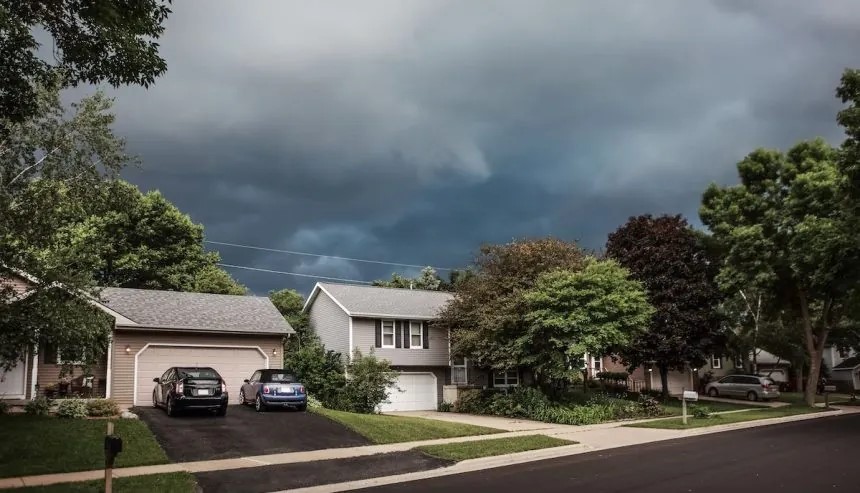As winter transitions into spring on Long Island, temperatures rise, snow melts, and nature comes back to life. Unfortunately, spring weather can also bring severe storms accompanied by damaging winds, lightning, hail, and even tornadoes. Preparing for severe weather is essential, as it can cause significant damage and disruption. According to the National Oceanic and Atmospheric Administration (NOAA), storms and other intense weather events can result in injuries, major property damage, and interruptions to homes and businesses.
Flooding is a particular concern in Suffolk and Nassau counties, especially when the ground remains frozen or saturated from melting snow. Heavy rainfall can quickly overwhelm storm drains and low-lying areas, causing homes and businesses to flood unexpectedly. Even if you live in an area that doesn’t frequently experience severe storms, it’s important to stay prepared. Here’s what you can do before, during, and after a spring storm to protect yourself and your property.
Before a Severe Spring Storm
High winds, lightning, heavy rain, and large hail can leave costly damage in their wake. As spring storms sweep across Long Island, preparation is key to minimizing potential property loss.

- Make an emergency plan with your family. Include a map of your home with designated escape routes in case you need to evacuate. Practice your evacuation plan and establish a meeting place outside your home.
- Create an emergency kit that includes:
- A first aid kit with antibiotic ointment, adhesive bandages, non-latex gloves, scissors, tweezers, and cloth tape.
- A battery-powered flashlight and radio, along with extra batteries.
- Non-perishable food items like canned goods and granola bars.
- Enough water for drinking and sanitation to last at least three days.
- Blankets and warm clothing in case of a power outage.
- Prescription medication, over-the-counter drugs you regularly use, and eyeglasses.
- Include your pets in your emergency plan. Prepare a disaster kit with pet food, water, a first-aid kit, and important documents. Ensure your pets wear a collar with an ID tag.
- Get flood insurance ahead of time—many policies take 30 days to go into effect. Standard homeowners’ and renters’ insurance does not cover flood damage. Document household items and important documents for insurance claims.
- Clear gutters and downspouts of debris to help manage heavy rain and stormwater runoff. Trim loose tree branches to make them more wind-resistant and reduce the risk of them falling on your property during a storm.
- Inspect your roof for any weak spots to prevent wind damage. Strong gusts can loosen shingles and cause water leaks.
By taking these steps, you can be better prepared if a spring storm strikes Long Island.

During a Severe Spring Storm
Your safety should be your top priority when a storm approaches. Stay informed and follow these precautions:
- Monitor local weather forecasts from the National Weather Service or local news stations. Be aware of severe weather alerts and take necessary safety measures.
- Get inside immediately. Close doors and windows, and stay away from them. High winds can send debris flying and shatter glass.
- If you’re driving, pull over and seek shelter. If no safe building is available, stay in your car with the windows closed.
- Avoid walking through flooded areas. Even a few inches of fast-moving water can be dangerous. Avoid standing water and never touch downed power lines or electrical wires.
- Listen to local news on a battery-operated radio. If authorities instruct you to evacuate, do so immediately. Take your emergency kit and leave a note with your name, contact information, and departure details.
- Avoid using wired electrical equipment or landline telephones. Also, refrain from taking baths or showers during a storm, as lightning can travel through plumbing.
After a Severe Spring Storm
Once the storm has passed, remain cautious to avoid injury or additional property damage.
- Check your surroundings for damage. Wait for official clearance before venturing outside.
- Do not enter damaged or flooded buildings without consulting professionals. Floodwaters may contain contaminants, and structural damage can make buildings unsafe.
- Report suspected damage to utility lines. If you think your home’s gas, water, or electrical lines are damaged, call local authorities and wait for clearance before turning them back on.
- If your home has flooded, avoid direct contact with the water. Floodwaters are often contaminated. Remove wet carpeting, furniture, and other items to prevent mold growth, which can begin within 24-72 hours.
- Take photos of structural damage for insurance claims. Make an inventory of damaged or lost items and document them with photos, your policy number, and your insurance company’s contact details.

Contact PuroClean of Huntington for Property Damage Restoration
Spring storms can be unpredictable, but you don’t have to handle the aftermath alone. PuroClean of Huntington is here to help restore your property after severe weather damage. Our expert team specializes in water damage restoration, fire and smoke damage cleanup, mold remediation, and biohazard cleanup. Using advanced techniques and equipment, we work quickly and efficiently to get your home or business back to normal.
For professional property damage restoration in Suffolk and Nassau counties, call PuroClean of Huntington at (631) 402-9700 or visit our website to learn more about our services.




 PuroClean of Huntington
PuroClean of Huntington